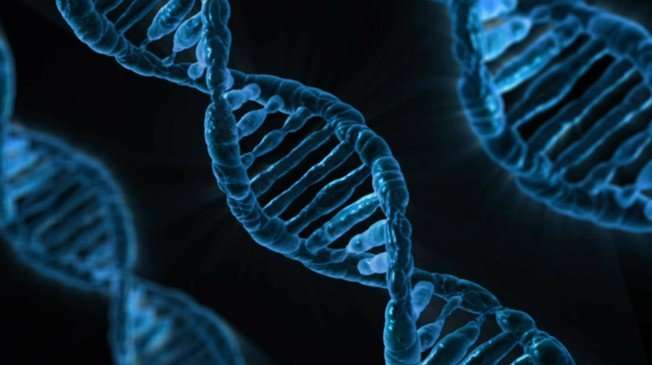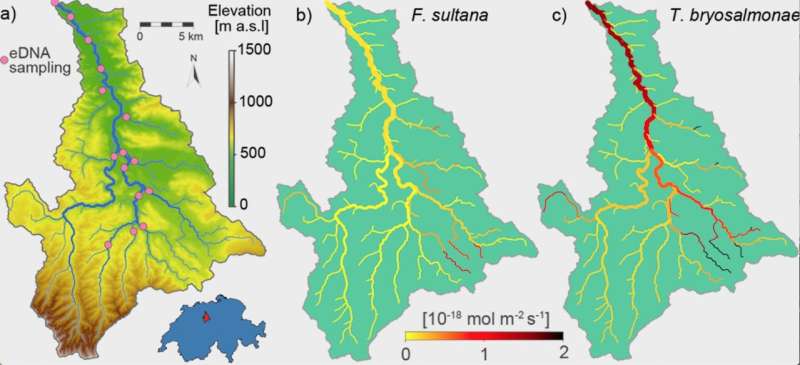DNA fragments reveal the variety of species in rivers

Bits of genetic material in rivers make it possible to detect the organisms living in them – without having to collect these and examine them under the microscope. Researchers at Eawag, the ETH and the EPFL have now developed a computer model that, with the help of single DNA measurements, even simulates exactly where and how often the species are present in bodies of water.
Every living thing leaves behind tiny traces of its genetic material, for example in the form of dead skin cells or excrement. If one now takes water samples and decodes the environmental DNA (also known as eDNA) therein, one knows which species cavort in which waters. One thus discovers rare species that literally fall through the net during normal testing. To be sure, this concept of eDNA has long been known. But: "Until now one could determine from eDNA whether a species is present or not. But how this species is distributed in the whole ecosystem was unknown," says Luca Carraro. He is now an Eawag researcher, after finishing his doctorate in environmental hydrology this summer at the EPFL.
Together with researchers at Eawag, the ETH and the EPFL, he has succeeded in reconstructing the extensive presence of species from selective eDNA measurements. For the first time, Carraro and his colleagues have used the method to determine the biomass distribution of a bryozoan (Fredericella sultana) and its parasite (Tetracapsuloides bryosalmonae) in the Wigger – a prealpine Swiss river. The parasite causes the dreaded fish disease PKD, which carries off thousands of trout every year in Switzerland.
Computer model takes into account hydrology and ecology

In order to determine as exactly as possible the distribution of the organisms, the researchers developed a computer model based on hydrological and ecological concepts in river networks. Genetic material measurements are fed into the model and take into account the transport and decomposition of the eDNA fragments along the river, as well as local environmental factors. "This method will make it possible to monitor biodiversity all over the world simply and inexpensively. This was not possible up to now with conventional methods," claims co-author and Eawag research group leader Hanna Hartikainen.
Provided by Ecole Polytechnique Federale de Lausanne
















